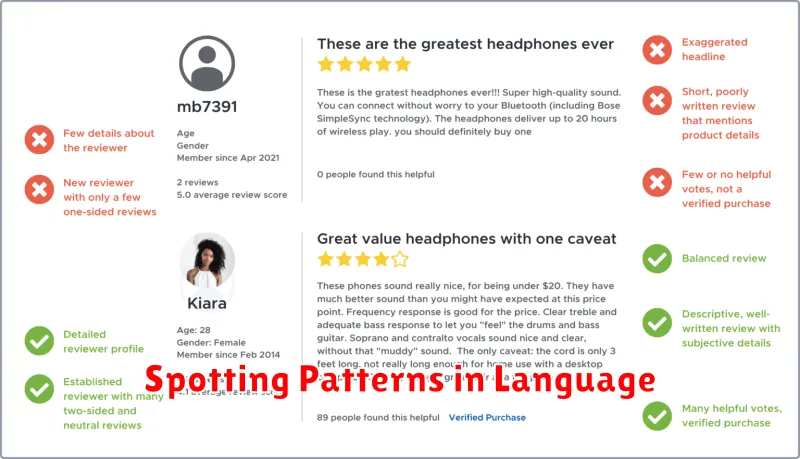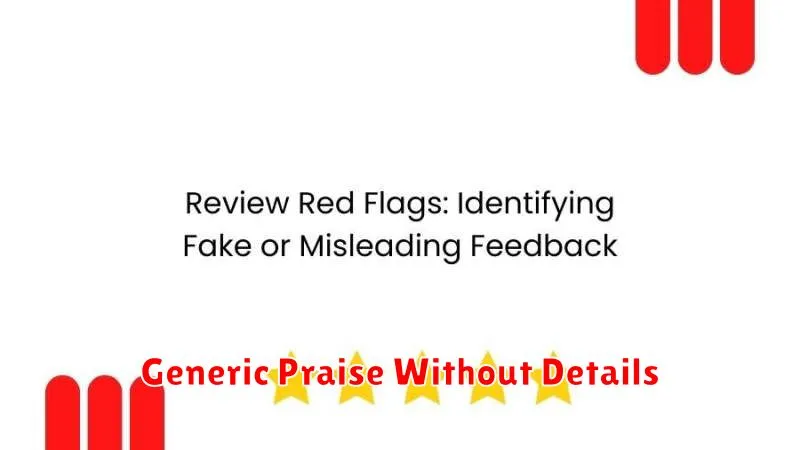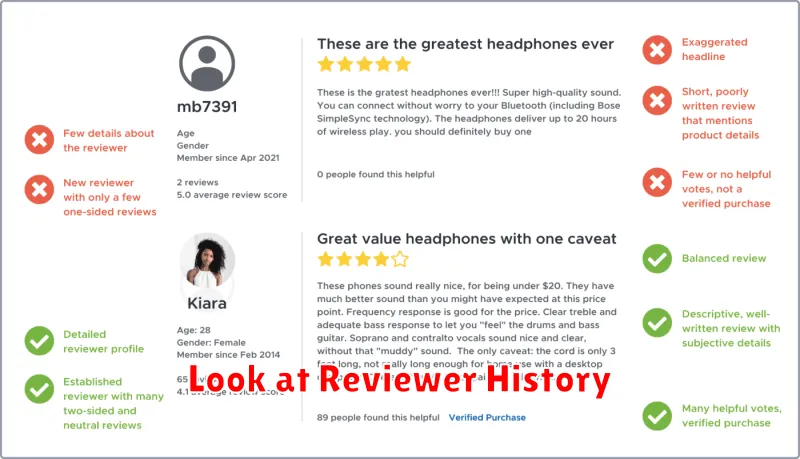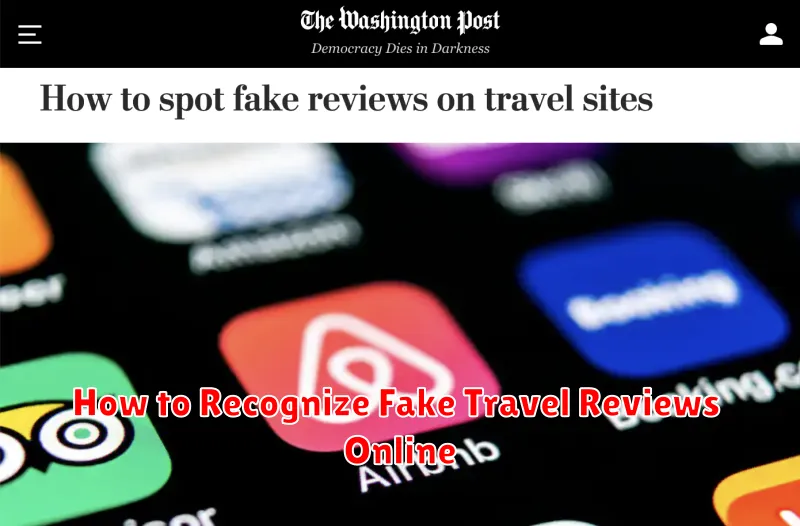Planning a trip can be exciting, but navigating the sea of online travel reviews can be daunting. Discerning genuine travel reviews from fabricated ones is crucial for making informed decisions about your accommodations, tours, and destinations. Fake travel reviews can mislead you into booking subpar experiences or, worse, scams. This article will equip you with the knowledge and tools to identify fake reviews, empowering you to make confident travel choices based on authentic feedback.
Learn to spot the red flags that indicate a fake travel review. We will delve into the telltale signs, from overly enthusiastic or excessively negative language to a lack of specific details. Understanding how to recognize these indicators will help you separate genuine experiences from manufactured praise or unjustified criticism, ensuring your trip planning relies on reliable travel reviews.
Why Fake Reviews Exist
Fake reviews serve various purposes, often benefiting businesses or individuals seeking to manipulate public perception. Several key motivations drive the creation of these deceptive reviews.
Boosting Business
Positive fake reviews can artificially inflate a business’s online ratings, attracting more customers and potentially increasing revenue. Conversely, negative fake reviews can be used to sabotage competitors, driving customers away from their establishments.
Promoting Products or Services
Fake reviews can also be utilized to generate hype around a specific product or service. Positive reviews create an illusion of popularity and desirability, encouraging potential buyers to make a purchase. Conversely, negative reviews can be used to discredit competing products or services.
Influencing Public Opinion
In some cases, fake reviews are employed to manipulate public opinion about a particular place, service, or even an individual. These reviews may be politically motivated or driven by personal vendettas.
Financial Incentives
Some individuals or organizations create fake reviews for monetary gain. They may be paid by businesses to write positive reviews or to post negative reviews about competitors.
Spotting Patterns in Language

One key to identifying fabricated travel reviews lies in analyzing the language used. Repetitive phrasing across multiple reviews can indicate a coordinated effort to manipulate perceptions. Look for unusual similarities in sentence structure or vocabulary.
Overuse of superlatives (“best,” “amazing,” “incredible”) without specific details to support the claims can be a red flag. Genuine reviews tend to provide a balanced perspective, acknowledging both positive and negative aspects of an experience.
Pay attention to the tone. While enthusiasm is expected in positive reviews, an excessively effusive or gushing tone that lacks concrete examples can be suspicious. Conversely, overly negative reviews filled with generic complaints and lacking specifics should also raise concerns.
Generic Praise Without Details

One telltale sign of a fake review is generic praise devoid of specifics. Vague statements like “This hotel was great!” or “The food was amazing!” offer little substantive information. Authentic reviews typically include details that paint a picture of the experience.
Look for reviews that mention specific dishes enjoyed at a restaurant, particular amenities appreciated at a hotel, or unique aspects of a tour. The absence of these details should raise a red flag.
Consider these examples:
- Generic: “Excellent service!”
- Specific: “The concierge, Michael, went above and beyond to secure us last-minute tickets to the sold-out show.”
The specific example offers valuable information and lends credibility, while the generic example says very little.
Unrealistically Positive Tone
One of the most telling signs of a fake review is an overly positive and unrealistic tone. Genuine reviews often include a mix of positive and negative observations, reflecting a balanced perspective. Fake reviews, on the other hand, tend to gush excessively, using superlative language and lacking any critical assessment.
Look for phrases like “the best ever,” “absolutely perfect,” or “life-changing.” While genuine experiences can be exceptional, an overwhelming abundance of these phrases, particularly without specific supporting details, should raise suspicion. A lack of any mentioned drawbacks, even minor ones, can also indicate inauthenticity.
Look for:
- Excessive use of superlatives (best, greatest, amazing)
- Lack of specific details to support the glowing praise
- Absence of any negative comments, even minor ones
Look at Reviewer History

A crucial step in identifying potentially fake travel reviews involves scrutinizing the reviewer’s history. Check the reviewer’s profile for details such as the date they joined the platform and the number of reviews they’ve posted. A brand new account with a limited number of reviews, especially if those reviews are all excessively positive or negative, should raise a red flag.
Examine the types of establishments the reviewer has reviewed. Has this person only reviewed luxury hotels or budget hostels? A wide range of reviews across different price points and property types lends more credibility. Look for patterns in their writing style, such as overly enthusiastic or extremely negative language used consistently across multiple reviews. This can be an indicator of inauthentic reviews.
Consider the timing of the reviews. A sudden influx of positive reviews for a particular establishment, especially if they appear around the same time, might be a sign of manufactured praise. Likewise, a cluster of negative reviews could be an attempt to sabotage a competitor.
Cross-Reference Multiple Platforms
Don’t rely solely on reviews from a single website. Cross-referencing reviews across multiple platforms provides a more comprehensive perspective. If a hotel receives glowing reviews on its own website, but negative feedback on other travel review sites, this discrepancy raises a red flag.
Consider checking reviews on established platforms such as TripAdvisor, Yelp, Booking.com, and Google Reviews. Compare the overall sentiment and look for recurring themes in both positive and negative reviews. This method helps to identify potentially fake or manipulated reviews on a specific platform.
Pay close attention to the distribution of reviews. A concentration of overwhelmingly positive reviews on a single platform, contrasted with more balanced feedback elsewhere, could signal manipulation. This is especially true if the positive reviews lack specific details or appear generic.

